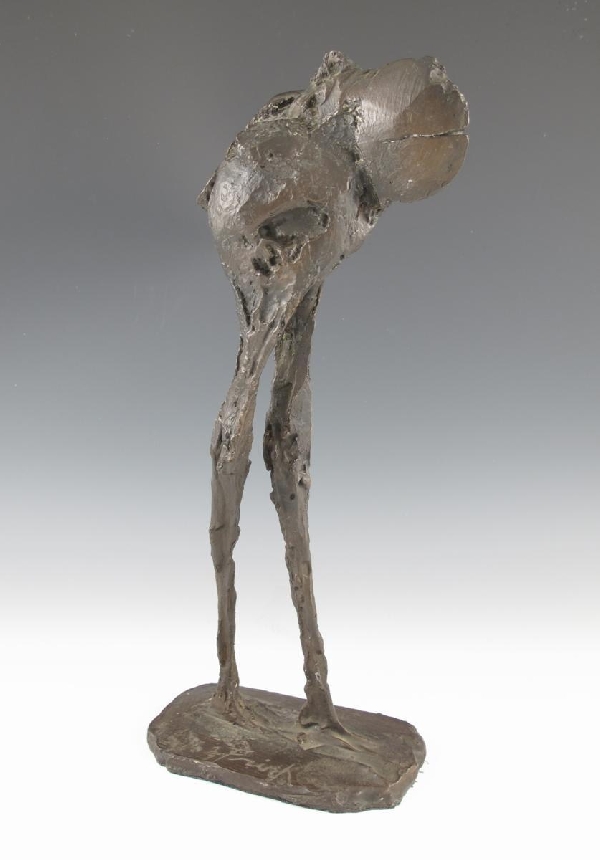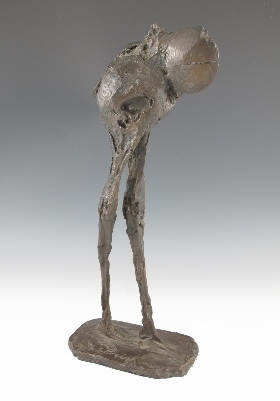Artists Biography
Dame Elizabeth Frink. RA
British 14 November 1930;
Despite her love of natural forms, Frink’s range of subjects could still be wide and varied and included men, birds, dogs, horses, religious and psychological/social motifs. 'Bird' (1952; London, Tate Gallery), with its alert, menacing stance, characterizes her early work in both terms of uncompromising form and natural drama. As her career progressed she concentrated on bronze outdoor sculpture (mostly life sized) with a 'scarred' surface created by repeatedly coating an armature with wet plaster and scrim; each coating is distressed and broken, eliminating or degrading specific detail and generalizing form.
In the 1960s Frink’s long standing fascination with flight was to the fore with the creation of a series of falling figures and winged men. She moved to France from 1967 to 1970, where she began a series of threatening, monumental, goggled male heads, both seemingly iconoclastic and often devoid of outward emotion. On returning to England, she focused on the male nude, barrel-chested, with almost mask-like features, attenuated limbs and a pitted surface, a prime example of this period in her work is 'Running Man' (1976; Pittsburgh, PA, Carnegie Mus. A.). Frink’s sculpture, and her lithographs and etchings created as book illustrations, drew on archetypes expressing masculine strength, struggle and aggression.
The relationship between the human and animal kingdoms takes up a continuous thread in Frink's output. In her male nudes it is impossible not to be struck by the corporeal physicallity inherent in the form. By the early 1990's Frink was working on the portrayal of baboons. She completed dozens of drawings of baboons and was planning for a life size group of a man confronted by his near relative the baboon, exploring the nature of the relationship between them. As with another contemorary, the Italian sculptor Marino Marini, Elisabeth Frink's horse and rider series where man appears at one with the animal is highly regarded. Again as often with Marini. Her riders and horses usually appear as one, a gestallt entity, creating a totemmic impression as in a lost bronze age ritualistic iconography.
Frink's preoccupation with the male form was such that there is only one female image in Frink's entire oeuvre, the engaging 'Walking Madonna' in the Cathedral Close at Salisbury not far from her Dorset home. The figure was not intended as a self-portrait but as is so often the case when an artist is confronted with a commission for a figure of their own gender, Frink involuntarily sculpted her own face. The work has on occassion been interpreted as a metaphor for the artist¹s life. This is no standardised, sanitised and retiring Madonna safely ensconced in the quietude of some Cathedral noo - the figure strides with a determinedly fixed purpose, unphased or distracted by the world around her. She is knowingly self-aware, grasped by a sense of purpose and fortitude despite the apparently frail body she inhabits.
Dame Elisabeth Frink died on the 18th April 1993 in Blandford Forum, Dorset.



